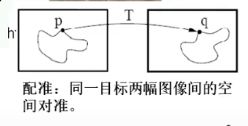- 携手英特尔 | 大势智慧数字文博科技亮相第五届进博会
大势智慧
vr
开放合作、共享共赢。11月5日至10日,第五届中国国际进口博览会在上海正式举办。本次进博会,由云冈研究院与大势智慧联合打造的云冈石窟第13窟整窟高精度三维模型,结合英特尔服务器软硬协同能力,成功推出数字文博VR一体机创新成果,亮相进博会技术装备展区,吸引众多嘉宾参观体验。数字文博VR一体机是文物数字化模型与虚拟现实技术融合展示的重要成果,实现了超大体量的高浮雕高精度整窟重建,让具备28.34万张纹
- 智源社区AI周刊:Hinton预测破解大脑机制时间;Gary Marcus批判追捧深度学习风潮;谷歌发布Imagen...
智源社区
机器学习人工智能深度学习编程语言大数据
汇聚每周必看AI观点、研究和各类资源,不错过一条重要资讯!欢迎扫码订阅,获取邮件推送。观点“我们会在未来的五年内破解这些(人脑的)程序......现有的一切人工智能,都是建立在与大脑高层次上所做的事情完全不同的基础上......假设有数十亿的参数,这些神经元间的权重在大量训练实例的基础上去调整,会发生奇妙的事情。大脑是如此,深度学习也是如此。但问题在于,如何获得调整参数的梯度......目前我的信
- Julia语言的计算机基础
Code侠客行
包罗万象golang开发语言后端
Julia语言的计算机基础引言随着数据科学、机器学习和高性能计算的快速发展,对编程语言的需求也日益增加。在众多编程语言中,Julia语言因其独特的设计理念和高性能而迅速崛起。本文将详细探讨Julia语言的基础知识,包括其历史背景、安装与环境配置、基本语法、数据结构、函数与模块、以及性能优化等方面,旨在为对Julia感兴趣的读者提供一份全面的入门指南。一、Julia语言简介1.1历史背景Julia是
- 深度探索:SQL Server 技术学习之旅
小码快撩
数据库sqlserversql
引言在数字化时代,数据库管理系统作为企业信息系统的核心组件,承载着海量数据的存储、管理和分析重任。其中,MicrosoftSQLServer作为一款久经市场考验的企业级关系型数据库平台,凭借其强大的功能、卓越的性能以及与微软生态系统的深度集成,赢得了全球众多企业的青睐。本文旨在引导读者踏上深入学习SQLServer的旅程,全方位领略其核心技术要点,为构建高效、稳定且安全的数据库系统奠定坚实基础。一
- 深度探索 DeepSeek-R1:国产大模型的AGI雏形与创新进展
微凉的衣柜
科技头条agi人工智能
随着人工智能技术的飞速发展,国内外企业纷纷发布了一系列创新的大模型,推动了AGI(通用人工智能)领域的探索。近期,DeepSeek-R1这一模型的发布引起了广泛关注,它不仅标志着国产大模型在智能化上的一次重大突破,还提出了全新的训练方法,解决了过去依赖大量人类数据的问题。本篇文章将详细介绍DeepSeek-R1的核心优势、技术创新以及实际应用案例,揭示它在AGI领域的潜力。1.DeepSeek-R
- 深入探讨:如何在 Debian 系统中实施有效的安全配置
Echo_Wish
运维探秘让你快速入坑运维debian安全运维
深入探讨:如何在Debian系统中实施有效的安全配置在如今的网络环境中,服务器的安全配置已经成为每个运维工程师的必备技能。无论是个人网站还是企业应用,确保服务器的安全性都是至关重要的。作为一名运维领域的自媒体创作者,我将分享一些在Debian系统中实施安全配置的技巧。这些技巧不仅能够提升服务器的安全性,还能帮助你防范常见的安全威胁。一、系统更新与包管理1.1定期更新系统保持系统和软件的最新状态是确
- 生数科技携手央视新闻《文博日历》,推动AI视频技术的创新应用
TMT星球
人工智能人工智能科技大数据
近日,生数科技携手央视新闻《文博日历》栏目,借助其旗下AI视频大模型及应用产品Vidu,共同打造AI版2025年文博日历联欢晚会,全面推动AI视频生成技术在媒体中的创新实践。《文博日历》是央视新闻客户端联合各大博物馆推出的文博科普产品,以新媒体形式为观众呈现丰富多彩的文博知识和历史文化。据「TMT星球」了解,此次合作中,生数科技为《文博日历》量身定制了AI视频生成方案,让文物们“动”起来,共同出演
- 【Web3企业出海】奇墨科技为企业出海提供云安全、ITQM智能运维及云MSP一站式服务
奇墨 ITQM
科技运维
1月15日,Web3嘉年华在四川成都成功举办。此次活动为探索企业出海的发展及创新机遇提供平台。活动现场,奇墨科技团队与在场嘉宾共商2025年企业出海的合作创新之道。奇墨科技,作为数字化领域的积极探索者与创新实践者,聚焦安全服务、奇墨ITQM智能运维、云MSP服务,为企业出海安全提供更具核心竞争力的技术支持。.云安全:极致性价比的企业云安全托底保障有底云安是奇墨科技旗下的云安全产品品牌,有底云安搭建
- Scala语言的循环实现
Code侠客行
包罗万象golang开发语言后端
Scala语言的循环实现在编程中,循环是一个非常重要的概念,它允许我们重复执行某些代码块。Scala作为一种现代化的编程语言,融合了函数式编程和面向对象编程的特点,提供了多种方式来实现循环。在本文中,我们将深入探讨Scala中的循环实现,包括基本的循环结构、使用集合与高阶函数、以及如何利用递归来实现循环。一、基础循环结构Scala提供了几种基础的循环结构,包括for循环、while循环和dowhi
- AI界的拼多多-中国人工智能初创公司DeepSeek如何与硅谷巨头竞争
xidianjiapei001
AI-人工智能与大模型人工智能AIDeepSeek大模型
这家公司打造出了一款成本更低且颇具竞争力的聊天机器人,其使用的高端计算机芯片数量少于谷歌和OpenAI等美国巨头企业,这凸显出芯片出口管制的局限性。圣诞节次日,一家名为DeepSeek的中国小型初创公司推出了一款新的人工智能系统,其性能可与OpenAI和谷歌等公司的尖端聊天机器人相媲美。仅此一点就堪称一个里程碑。但这个名为DeepSeek-V3系统的研发团队称,他们迈出了更大的一步。在一篇解释该技
- multimap在c++的一些用法
wwjjjww
c++开发语言
multimap是C++标准库中一个非常有用的关联容器,用于存储键值对,其中一个键可以对应多个值。与map类似,但multimap允许相同的键有多个值。下面是multimap的用法大全,包括基本操作和常见用法示例。1.引入头文件首先,要使用multimap,需要包含头文件:#include2.定义和初始化创建multimap对象时,需要指定键和值的类型。multimapmyMultimap;3.插
- 线性代数 第七讲 二次型_标准型_规范型_坐标变换_合同_正定二次型详细讲解_重难点题型总结
二叉树果实
线性代数线性代数
文章目录1.二次型1.1二次型、标准型、规范型、正负惯性指数、二次型的秩1.2坐标变换1.3合同1.4正交变换化为标准型1.5可逆线性变换和正交变换1.6二次型化标准形,二次型化规范形的联系思考1.8两个二次型联系的思考1.9对于配方法问题的深入思考2.二次型的主要定理3.正定二次型与正定矩阵4.重难点题型总结4.1配方法将二次型化为标准型4.2正交变换法将二次型化为标准型4.3规范型确定取值范围
- dirname和basename
学无止境LL
Shell
简介dirname命令去除文件名中的非目录部分,仅显示与目录有关的内容。dirname命令读取指定路径名保留最后一个/及其左边的字符,删除右边部分,并写结果到标准输出。如果最后一个/之后无字符,dirname命令使用倒数第二个/,并忽略其后的所有字符。dirname和basename通常在shell内部命令替换使用,以指定一个与指定输入文件名略有差异的输出文件名。语法diename(选项)(参数)
- 想转行到人工智能领域,我该学什么,怎么学?
张登杰踩
人工智能python
转行到人工智能(AI)领域需要系统的学习和实践,以下是详细的路径建议,涵盖基础知识、技能学习、项目实践和求职准备:一、明确目标和领域方向人工智能领域广泛,建议先了解细分方向(如机器学习、深度学习、计算机视觉、自然语言处理、强化学习等),结合兴趣和职业规划选择切入点。二、构建基础知识1.数学基础线性代数:矩阵运算、特征值、向量空间。微积分:导数、梯度、优化理论。概率与统计:贝叶斯定理、分布、假设检验
- Anaconda 安装以及命令总结文档
张登杰踩
人工智能condapython人工智能pytorch
以下是一份详细的Anaconda命令总结文档,涵盖环境管理、包管理、配置、常用工具等核心操作:Anaconda命令总结1.安装与更新命令说明conda--version查看Conda版本condaupdatenumpy更新numpy自身condaupdateanaconda更新Anaconda元包(包括大部分科学计算库)condainstallnumpy=安装指定版本的numpy2.环境管理创建与
- MKV视频转换软件 MakeMKV v1.17.8 注册码
userteam
音视频电脑windows
MakeMKV是一款专为光盘视频转换设计的实用工具,能够将DVD和蓝光光盘内容快速转换为MKV格式。MKV格式支持字幕封装,不需要额外设置,非常便捷。不管你是否熟悉技术操作,这款软件都能让你轻松实现视频转换。该版本已注册,可以使用全部功能。使用说明:1、将压缩文件解压到固定位置,不要随意移动。2、解压后,双击start_makeMKV.bat来运行软件3、不要更新,更新后注册效果会失效下载地址(链
- 有意思的题目01
老薛爱吃大西瓜
算法c语言学习排序算法数据结构
数组去重题目:手动输入一个数组(int),长度自定,将数组内容去重,并输出值输入:1232425262输出:13456思路:1.先找到重复数字,能够两两对比的方法,可以进行选择排序2.将重复数字改为标记数字,这里为了方便我选的是0当然,为了避免与数组中值重复,导致出错,可以用stdlib头文件下面的rand()函数获取一个随机值,将其与数组内容对比,没有相等的就作为标记值3.将标记数组后移//创建
- 任务执行模式全解析:并发、并行、串行与同步、异步的对比
Nita.
并行编程C#并行编程
目录1.并发(Concurrent)、并行(Parallel)、串行(Serial)1.1并行(Parallel)1.2并发(Concurrent)1.3并发与并行的区别1.4串行(Serial)2.同步(Synchronous)与异步(Asynchronous)2.1同步(Synchronous)2.2异步(Asynchronous)2.3同步与异步的区别3.并行编程和异步编程3.1区别3.2实
- C# 中 default 使用详解
鲤籽鲲
C#c#数据库开发语言
总目录前言在C#中,default关键字用于表示类型默认值。它可以根据上下文推断出适用的类型,并返回该类型的默认值。随着C#版本的发展,default的用法也变得更加丰富和灵活。本文将详细介绍default在不同场景下的使用方法及其最佳实践。一、default获取类型的默认值1.语法与作用可以使用default关键字来获取任意类型的默认值。值类型(如int,double,struct等):返回类型
- 使用C#VB.NET将XPS转换为JPG或PNG图像
Lee-Shyllen
Aspose文档管理文档格式转换asposexps转图像文档格式转换
XPS文件格式经常在文件处理应用程序中使用。您可以在基于.NETFramework的应用程序中使用C#或VB.NET以编程方式将XPS或OXPS转换为JPG或PNG图像。让我们逐步介绍以下方案,以了解有关XPS转换的更多信息:使用C#或VB.NET将XPS,OXPS转换为JPG图像使用C#或VB.NET将XPS,OXPS转换为PNG图像目前,.NET版Aspose.page升级到v20.10版,感
- Java面试题及答案汇总(二,马士兵Java全套百度云
Java独家笑
程序员后端java面试
常用容器的图录:19.Collection和Collections有什么区别?java.util.Collection是一个集合接口(集合类的一个顶级接口)。它提供了对集合对象进行基本操作的通用接口方法。Collection接口在Java类库中有很多具体的实现。Collection接口的意义是为各种具体的集合提供了最大化的统一操作方式,其直接继承接口有List与Set。Collections则是集
- 第 9 课 Python 异常处理
嵌入式老牛
Python入门python开发语言
1.异常与错误程序错误是指语法错误(指令输入不正确)和逻辑错误(程序执行结果不正确),而程序异常是一个意外事件,该事件会在程序执行过程中发生,影响了程序的正常执行,比如:打开的文件不存在、被除数为0、操作的数据类型不对、存储错误,互联网请求错误等等。一般情况下,在Python无法正常处理程序时就会发生一个异常。异常是Python对象,表示一个错误。当Python脚本发生异常时我们需要捕获处理它,否
- Modbus-RTU实用详解
嵌入式老牛
网络网络协议
0简介Modbus,作为一种串行通信协议,由施耐德电气(前身为Modicon公司)在1979年发布,旨在支持可编程逻辑控制器(PLC)之间的通信。自那时起,Modbus已经成为工业界通信协议的标杆,并且如今广泛应用于各种工业电子设备间的连接。关于这一重要的工业通信协议,网络上关于其优缺点的分析文章比比皆是。在此我仅谈谈我自己的一些看法:Modbus协议兼顾了数据链路层与应用层的双层结构,结构简单清
- 探索重庆市乡镇级区划图:GIS学习与研究的利器
郎磊权Halden
探索重庆市乡镇级区划图:GIS学习与研究的利器【下载地址】重庆市乡镇级区划图SHP格式本仓库提供了一份重庆市乡镇级区划图的资源文件,文件格式为SHP(Shapefile)。该资源包含了重庆市各乡镇的区划边界,同时也包括了省级边界信息。此资源主要用于ArcGIS学习使用,适合需要进行地理信息系统(GIS)分析和地图制作的用户项目地址:https://gitcode.com/open-source-t
- 【Day26 LeetCode】贪心Ⅳ
银河梦想家
leetcode算法
一、贪心1、用最少数量的箭引爆气球452对右区间进行排序,然后判断其它区间是否与该区间有重叠。classSolution{staticboolcmp(vector&a,vector&b){returna[1]>&points){//对右区间进行排序sort(points.begin(),points.end(),cmp);intpre=points[0][1],ans=1;for(autopoin
- 剩余电流动作保护器和接地系统
ACRELKY
安全
摘要:剩余电流动作保护器在不同的接地系统中有其适用性和严格的接线方式,错误地选用剩余电流动作保护器或不规范地接线,会使剩余电流动作保护器误动或拒动,甚至引起人身触电和电气火灾事故。从剩余电流动作保护器工作原理出发,着重于用电设备的电流矢量分析与计算,阐述剩余电流动作保护器在低压配电接地系统中的应用特性,定量地分析接地系统类型对剩余电流动作保护器工作的影响。电流矢量的分析方法为剩余电流动作保护器的应
- 2024 年最新基于 Spring Cloud 的微服务架构分析
2401_83916326
程序员架构springcloud微服务
SpringCloud的核心组件==================1.Eureka(注册中心)================Eureka是SpringCloud微服务架构中的注册中心,专门负责服务的注册与发现,里面有一个注册表,保存了各个服务器的机器和端口。Eureka服务端:也称服务注册中心,同其他服务注册中心一样,支持高可用配置。如果Eureka以集群模式部署,当集群中有分片出现故障时,那
- Spring Cloud入门-汇总篇(Hoxton版本)
2401_84049200
程序员springcloud面试spring
《一线大厂Java面试题解析+核心总结学习笔记+最新讲解视频+实战项目源码》,点击传送门,即可获取!|9|SpringCloud入门-Bus消息总线(Hoxton版本)|https://blog.csdn.net/ThinkWon/article/details/103753372||10|SpringCloud入门-Sleuth服务链路跟踪(Hoxton版本)|https://blog.csdn
- # AI计算模式 神经网络模型 深度神经网络 多层感知机 卷积神经网络 循环神经网络 长短期记忆网络 图像识别、语音识别、自然语言 轻量化模型和模型压缩 大模型分布式并行
EwenWanW
AGI人工智能神经网络dnn
AI计算模式AI技术发展至今,主流的模型是深度神经网络模型。近20年来,神经网络模型经过多样化的发展,模型总体变得越来越复杂和庞大,对硬件设备的计算速度、存储能力、通信速度的要求越来越高。尽管学者已经提出了许多方法优化模型结构,降低模型的参数量,但是伴随着人们对AI能力的要求越来越高,模型变得更大是不可避免的。原先单CPU可进行模型的训练与推理,如今需要使用GPU、TPU等设备,并通过分布式并行的
- 服务器遭到入侵后的排查与应对
Ryann6
服务器运维
目录1.立即隔离受影响的服务器2.检查系统日志重点检查:3.检查运行中的进程和开放端口4.检查文件系统的异常更改5.分析网络流量6.检查用户账户和权限7.查杀恶意软件8.恢复系统和加强防御最后在当今的网络环境中,服务器遭到入侵已经成为一个不可忽视的安全威胁。无论是个人网站、企业服务,还是云平台上的资源,一旦服务器被攻击,可能会导致数据泄露、服务中断、甚至财务损失。本文将介绍如何在服务器遭到入侵后进
- 关于旗正规则引擎下载页面需要弹窗保存到本地目录的问题
何必如此
jsp超链接文件下载窗口
生成下载页面是需要选择“录入提交页面”,生成之后默认的下载页面<a>标签超链接为:<a href="<%=root_stimage%>stimage/image.jsp?filename=<%=strfile234%>&attachname=<%=java.net.URLEncoder.encode(file234filesourc
- 【Spark九十八】Standalone Cluster Mode下的资源调度源代码分析
bit1129
cluster
在分析源代码之前,首先对Standalone Cluster Mode的资源调度有一个基本的认识:
首先,运行一个Application需要Driver进程和一组Executor进程。在Standalone Cluster Mode下,Driver和Executor都是在Master的监护下给Worker发消息创建(Driver进程和Executor进程都需要分配内存和CPU,这就需要Maste
- linux上独立安装部署spark
daizj
linux安装spark1.4部署
下面讲一下linux上安装spark,以 Standalone Mode 安装
1)首先安装JDK
下载JDK:jdk-7u79-linux-x64.tar.gz ,版本是1.7以上都行,解压 tar -zxvf jdk-7u79-linux-x64.tar.gz
然后配置 ~/.bashrc&nb
- Java 字节码之解析一
周凡杨
java字节码javap
一: Java 字节代码的组织形式
类文件 {
OxCAFEBABE ,小版本号,大版本号,常量池大小,常量池数组,访问控制标记,当前类信息,父类信息,实现的接口个数,实现的接口信息数组,域个数,域信息数组,方法个数,方法信息数组,属性个数,属性信息数组
}
&nbs
- java各种小工具代码
g21121
java
1.数组转换成List
import java.util.Arrays;
Arrays.asList(Object[] obj); 2.判断一个String型是否有值
import org.springframework.util.StringUtils;
if (StringUtils.hasText(str)) 3.判断一个List是否有值
import org.spring
- 加快FineReport报表设计的几个心得体会
老A不折腾
finereport
一、从远程服务器大批量取数进行表样设计时,最好按“列顺序”取一个“空的SQL语句”,这样可提高设计速度。否则每次设计时模板均要从远程读取数据,速度相当慢!!
二、找一个富文本编辑软件(如NOTEPAD+)编辑SQL语句,这样会很好地检查语法。有时候带参数较多检查语法复杂时,结合FineReport中生成的日志,再找一个第三方数据库访问软件(如PL/SQL)进行数据检索,可以很快定位语法错误。
- mysql linux启动与停止
墙头上一根草
如何启动/停止/重启MySQL一、启动方式1、使用 service 启动:service mysqld start2、使用 mysqld 脚本启动:/etc/inint.d/mysqld start3、使用 safe_mysqld 启动:safe_mysqld&二、停止1、使用 service 启动:service mysqld stop2、使用 mysqld 脚本启动:/etc/inin
- Spring中事务管理浅谈
aijuans
spring事务管理
Spring中事务管理浅谈
By Tony Jiang@2012-1-20 Spring中对事务的声明式管理
拿一个XML举例
[html]
view plain
copy
print
?
<?xml version="1.0" encoding="UTF-8"?>&nb
- php中隐形字符65279(utf-8的BOM头)问题
alxw4616
php中隐形字符65279(utf-8的BOM头)问题
今天遇到一个问题. php输出JSON 前端在解析时发生问题:parsererror.
调试:
1.仔细对比字符串发现字符串拼写正确.怀疑是 非打印字符的问题.
2.逐一将字符串还原为unicode编码. 发现在字符串头的位置出现了一个 65279的非打印字符.
- 调用对象是否需要传递对象(初学者一定要注意这个问题)
百合不是茶
对象的传递与调用技巧
类和对象的简单的复习,在做项目的过程中有时候不知道怎样来调用类创建的对象,简单的几个类可以看清楚,一般在项目中创建十几个类往往就不知道怎么来看
为了以后能够看清楚,现在来回顾一下类和对象的创建,对象的调用和传递(前面写过一篇)
类和对象的基础概念:
JAVA中万事万物都是类 类有字段(属性),方法,嵌套类和嵌套接
- JDK1.5 AtomicLong实例
bijian1013
javathreadjava多线程AtomicLong
JDK1.5 AtomicLong实例
类 AtomicLong
可以用原子方式更新的 long 值。有关原子变量属性的描述,请参阅 java.util.concurrent.atomic 包规范。AtomicLong 可用在应用程序中(如以原子方式增加的序列号),并且不能用于替换 Long。但是,此类确实扩展了 Number,允许那些处理基于数字类的工具和实用工具进行统一访问。
- 自定义的RPC的Java实现
bijian1013
javarpc
网上看到纯java实现的RPC,很不错。
RPC的全名Remote Process Call,即远程过程调用。使用RPC,可以像使用本地的程序一样使用远程服务器上的程序。下面是一个简单的RPC 调用实例,从中可以看到RPC如何
- 【RPC框架Hessian一】Hessian RPC Hello World
bit1129
Hello world
什么是Hessian
The Hessian binary web service protocol makes web services usable without requiring a large framework, and without learning yet another alphabet soup of protocols. Because it is a binary p
- 【Spark九十五】Spark Shell操作Spark SQL
bit1129
shell
在Spark Shell上,通过创建HiveContext可以直接进行Hive操作
1. 操作Hive中已存在的表
[hadoop@hadoop bin]$ ./spark-shell
Spark assembly has been built with Hive, including Datanucleus jars on classpath
Welcom
- F5 往header加入客户端的ip
ronin47
when HTTP_RESPONSE {if {[HTTP::is_redirect]}{ HTTP::header replace Location [string map {:port/ /} [HTTP::header value Location]]HTTP::header replace Lo
- java-61-在数组中,数字减去它右边(注意是右边)的数字得到一个数对之差. 求所有数对之差的最大值。例如在数组{2, 4, 1, 16, 7, 5,
bylijinnan
java
思路来自:
http://zhedahht.blog.163.com/blog/static/2541117420116135376632/
写了个java版的
public class GreatestLeftRightDiff {
/**
* Q61.在数组中,数字减去它右边(注意是右边)的数字得到一个数对之差。
* 求所有数对之差的最大值。例如在数组
- mongoDB 索引
开窍的石头
mongoDB索引
在这一节中我们讲讲在mongo中如何创建索引
得到当前查询的索引信息
db.user.find(_id:12).explain();
cursor: basicCoursor 指的是没有索引
&
- [硬件和系统]迎峰度夏
comsci
系统
从这几天的气温来看,今年夏天的高温天气可能会维持在一个比较长的时间内
所以,从现在开始准备渡过炎热的夏天。。。。
每间房屋要有一个落地电风扇,一个空调(空调的功率和房间的面积有密切的关系)
坐的,躺的地方要有凉垫,床上要有凉席
电脑的机箱
- 基于ThinkPHP开发的公司官网
cuiyadll
行业系统
后端基于ThinkPHP,前端基于jQuery和BootstrapCo.MZ 企业系统
轻量级企业网站管理系统
运行环境:PHP5.3+, MySQL5.0
系统预览
系统下载:http://www.tecmz.com
预览地址:http://co.tecmz.com
各种设备自适应
响应式的网站设计能够对用户产生友好度,并且对于
- Transaction and redelivery in JMS (JMS的事务和失败消息重发机制)
darrenzhu
jms事务承认MQacknowledge
JMS Message Delivery Reliability and Acknowledgement Patterns
http://wso2.com/library/articles/2013/01/jms-message-delivery-reliability-acknowledgement-patterns/
Transaction and redelivery in
- Centos添加硬盘完全教程
dcj3sjt126com
linuxcentoshardware
Linux的硬盘识别:
sda 表示第1块SCSI硬盘
hda 表示第1块IDE硬盘
scd0 表示第1个USB光驱
一般使用“fdisk -l”命
- yii2 restful web服务路由
dcj3sjt126com
PHPyii2
路由
随着资源和控制器类准备,您可以使用URL如 http://localhost/index.php?r=user/create访问资源,类似于你可以用正常的Web应用程序做法。
在实践中,你通常要用美观的URL并采取有优势的HTTP动词。 例如,请求POST /users意味着访问user/create动作。 这可以很容易地通过配置urlManager应用程序组件来完成 如下所示
- MongoDB查询(4)——游标和分页[八]
eksliang
mongodbMongoDB游标MongoDB深分页
转载请出自出处:http://eksliang.iteye.com/blog/2177567 一、游标
数据库使用游标返回find的执行结果。客户端对游标的实现通常能够对最终结果进行有效控制,从shell中定义一个游标非常简单,就是将查询结果分配给一个变量(用var声明的变量就是局部变量),便创建了一个游标,如下所示:
> var
- Activity的四种启动模式和onNewIntent()
gundumw100
android
Android中Activity启动模式详解
在Android中每个界面都是一个Activity,切换界面操作其实是多个不同Activity之间的实例化操作。在Android中Activity的启动模式决定了Activity的启动运行方式。
Android总Activity的启动模式分为四种:
Activity启动模式设置:
<acti
- 攻城狮送女友的CSS3生日蛋糕
ini
htmlWebhtml5csscss3
在线预览:http://keleyi.com/keleyi/phtml/html5/29.htm
代码如下:
<!DOCTYPE html>
<html>
<head>
<meta charset="UTF-8">
<title>攻城狮送女友的CSS3生日蛋糕-柯乐义<
- 读源码学Servlet(1)GenericServlet 源码分析
jzinfo
tomcatWebservlet网络应用网络协议
Servlet API的核心就是javax.servlet.Servlet接口,所有的Servlet 类(抽象的或者自己写的)都必须实现这个接口。在Servlet接口中定义了5个方法,其中有3个方法是由Servlet 容器在Servlet的生命周期的不同阶段来调用的特定方法。
先看javax.servlet.servlet接口源码:
package
- JAVA进阶:VO(DTO)与PO(DAO)之间的转换
snoopy7713
javaVOHibernatepo
PO即 Persistence Object VO即 Value Object
VO和PO的主要区别在于: VO是独立的Java Object。 PO是由Hibernate纳入其实体容器(Entity Map)的对象,它代表了与数据库中某条记录对应的Hibernate实体,PO的变化在事务提交时将反应到实际数据库中。
实际上,这个VO被用作Data Transfer
- mongodb group by date 聚合查询日期 统计每天数据(信息量)
qiaolevip
每天进步一点点学习永无止境mongodb纵观千象
/* 1 */
{
"_id" : ObjectId("557ac1e2153c43c320393d9d"),
"msgType" : "text",
"sendTime" : ISODate("2015-06-12T11:26:26.000Z")
- java之18天 常用的类(一)
Luob.
MathDateSystemRuntimeRundom
System类
import java.util.Properties;
/**
* System:
* out:标准输出,默认是控制台
* in:标准输入,默认是键盘
*
* 描述系统的一些信息
* 获取系统的属性信息:Properties getProperties();
*
*
*
*/
public class Sy
- maven
wuai
maven
1、安装maven:解压缩、添加M2_HOME、添加环境变量path
2、创建maven_home文件夹,创建项目mvn_ch01,在其下面建立src、pom.xml,在src下面简历main、test、main下面建立java文件夹
3、编写类,在java文件夹下面依照类的包逐层创建文件夹,将此类放入最后一级文件夹
4、进入mvn_ch01
4.1、mvn compile ,执行后会在
